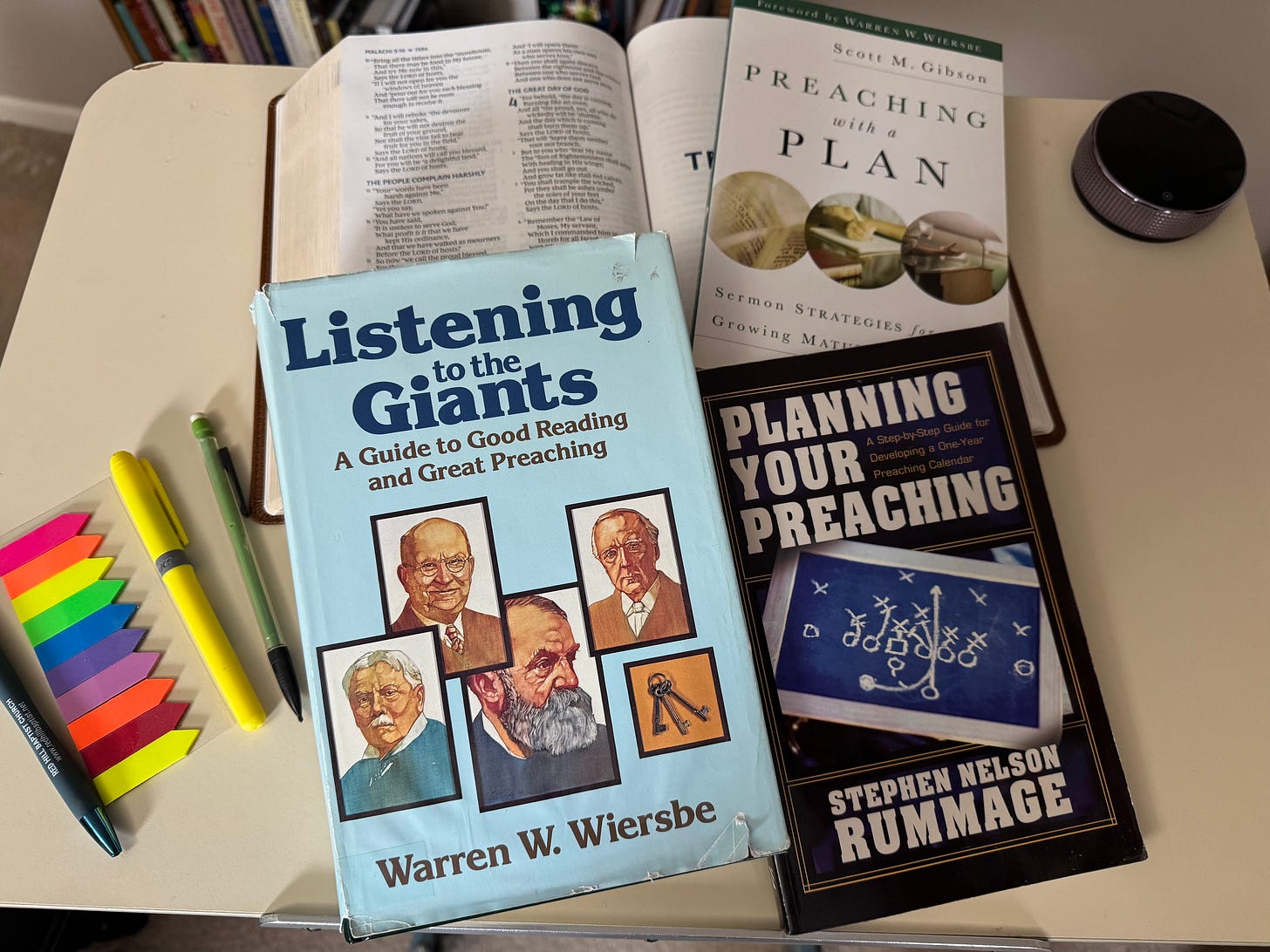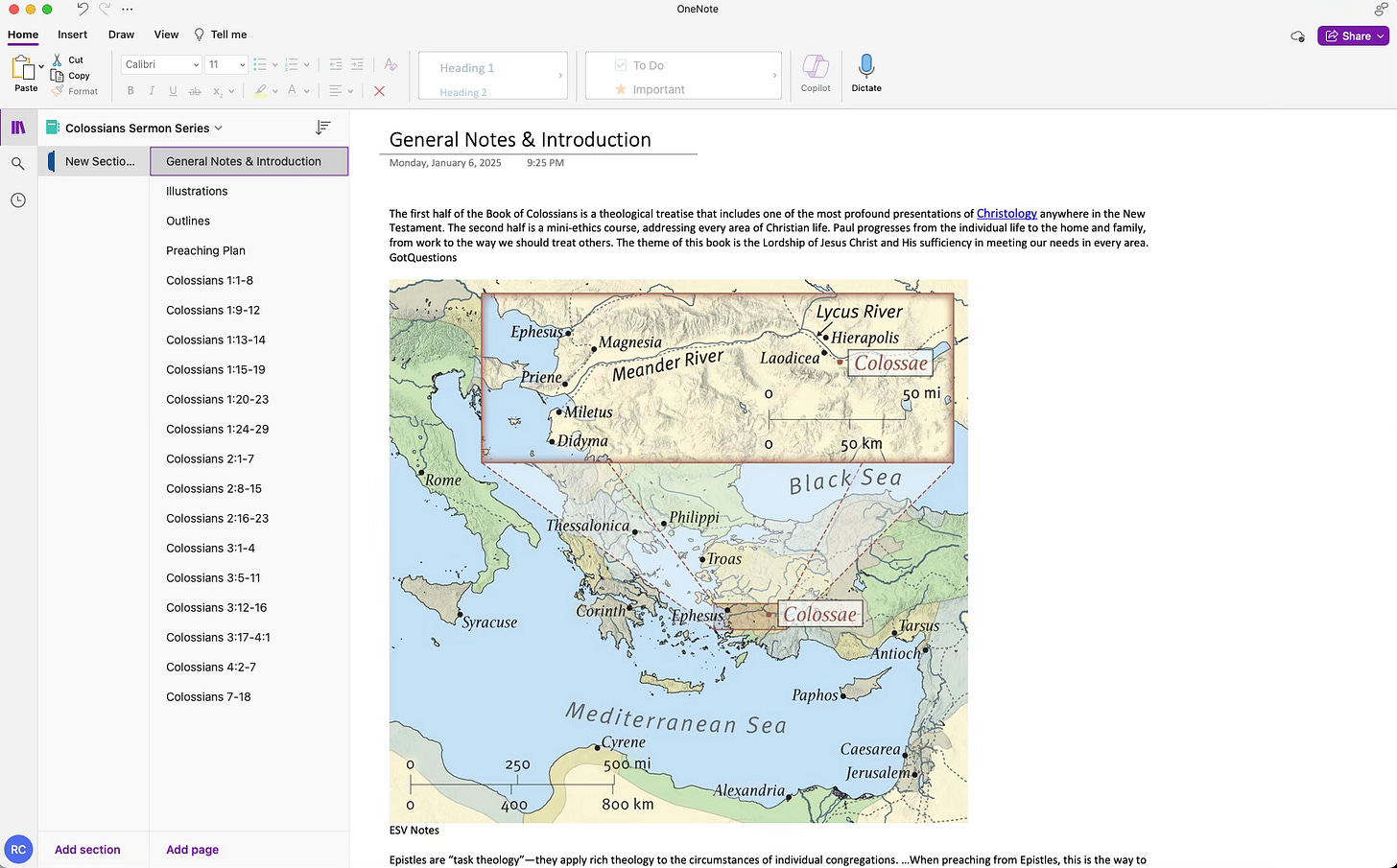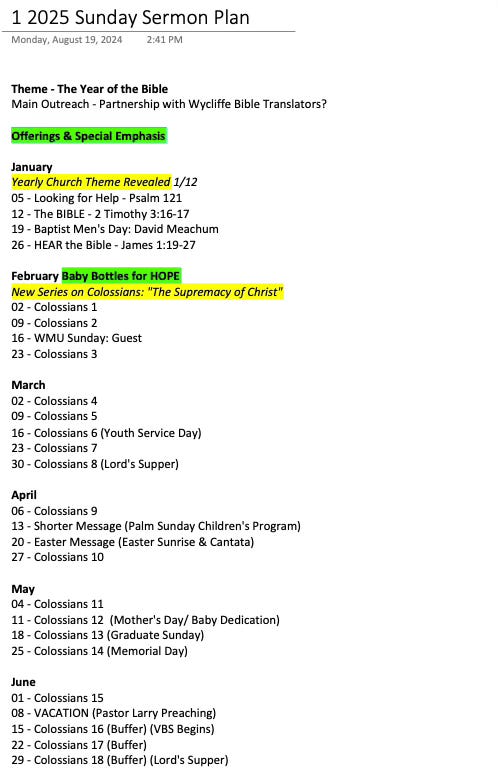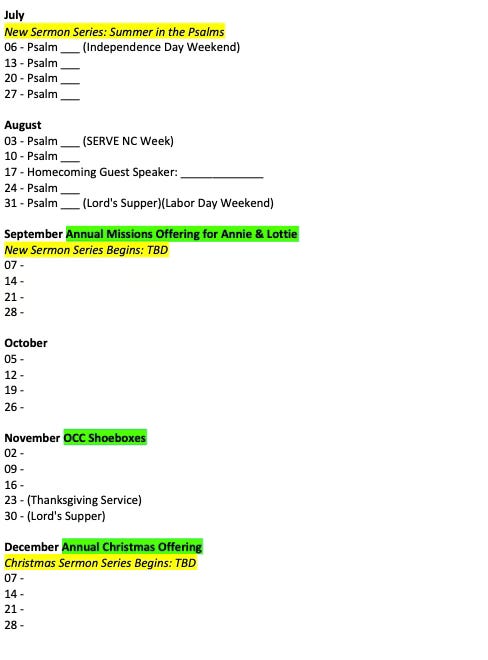Sermon Planning
Suggestions for an Annual Plan & Individual Series
For every hour we spend behind the pulpit declaring, "Thus saith the Lord," there are many hours hidden in the study—at least, there should be. A lot of a pastor's time is spent in preparation.
I remember as a young pastor trying to come up with the passage I would preach for that particular Sunday. There were times when I could not decide until late in the week. Much precious prep time was wasted. Somewhere along the line, I don't remember when, I moved to the sermon series. I think it was after reading Wiersbe. Here’s part of what he had to say:
“Most congregations thrive on series preaching. For one thing, a series arouses interest; and excitement and anticipation are good preparation for hearing God’s Word. Series preaching exposes the people to various aspects of God’s truth and, I might add, helps keep the preacher from riding his favorite homiletical hobbies. The inner man, just like the outer man, needs a balanced diet.” (Wiersbe, Listening To The Giants, 244)
Moving to the sermon series revolutionized the way I worked!
Instead of wasting all that time figuring out where I was going, I could begin my journey. What I call "spade work" could be done well in advance (printing off the passage, doing observation, studying words, looking for connections, figuring out the flow, etc.). In addition, I could be on the lookout for illustrations to "open the window" on the passage.
Planning future sermon series also allowed me to begin work well before the first message. I could start researching and collecting commentaries and other helpful resources. It also helped me ensure that I was presenting a balanced meal to the congregation (Old Testament series, New Testament series, character studies, doctrinal studies, and the like).
If you've never planned your preaching calendar or need a refresher, I have a few suggestions. This is based on how I work. We’ll cover the annual plan and an individual sermon series in that plan. Feel free to adapt, delete, and customize what works for you.
I begin the yearly sermon plan with a blank document. On the left side of the page, I enter the dates for each Sunday of the year.
January
05 -
12 -
19 -
26 -
TIP: I did this in Evernote for years, but now I use Microsoft OneNote. I highly recommend it! I use it for sermons, doctoral research, and writing. If you have Microsoft, you already have it. If you don't, I understand it is free for everyone. Just go here. It syncs with other devices, so it's always available. I plan to write another time about how to make the most of this great tool.
After you've laid out the year with months and dates, you will want to return and insert holidays, vacations, and special church events.
April
06 -
13 - (Palm Sunday Children's Program)
20 - (Easter Sunday)
27 - (Personal Vacation)
Next, insert your current sermon series on the plan. This necessitates that you have spent time in prayer choosing the individual series. You'll want to roughly figure out the passages you will cover each week to know how many weeks it will take to do the series.
TIP: Always build in a couple of Sundays as a buffer for when the series goes longer, you get sick, or something else impacts the plan. If you think it will take 5 messages, allow for 7.
TIP: Not sure how to break down a Bible book? You can look at the pericopes in an exegetical commentary. Most of the time, though, I look at how other expositors and preachers have broken it down. How many messages did they preach on it? How did they divide it?
For my Colossians series, I'm following James T Draper Jr.'s breakdown, which equals 15 messages - it looks like this…
I also set up a notebook in OneNote to use as I study.
Now, we return to the Annual Plan.
Begin to fill in the messages for the year (you'll note in my example a series and some stand-alone sermons)
April
06 - Colossians Series 9
13 - Shorter Stand Alone Message (Palm Sunday Children's Program)
20 - Easter Sermon & Sunrise Service (Easter Sunday)
27 - Associate Pastor Preaching (Personal Vacation)
You have probably noticed that this is all still pretty general - I haven't put in the sermon titles or passages. These will come, but we are just getting the "big rocks" in the jar now. You can make this as detailed as you like. But you'll notice we already have direction. We know a shorter Easter or Cross message will be needed on 4/13, and an Easter message and sunrise devotional will be required on 4/20. I know this in January, and I can begin praying and thinking about it now.
The Annual Sermon Plan is a Work in Progress for a while. Since snapping these pictures, I’ve had to adjust the Colossians series again due to a speaking invitation in May. I’ve also combined one set of passages. I must also adjust it to include the rest of my vacation weeks.
You'll notice I'm doing a series on various Psalms in the summer, but I haven’t finalized what I’ll preach in the fall.
I hope this helps you redeem the time spent on your sermon preparation.
If you want to explore sermon planning in more detail, I suggest Stephen Rummage’s Planning Your Preaching & Scott Gibson’s Preaching with a Plan.
I'd love to hear how you go about this. Drop a comment below!
Other encouragement & help in sermon planning:
https://www.pastorscenter.org/blog/planning-your-preaching/
https://ftc.co/resource-library/blog-entries/an-essential-part-of-planning-your-preaching/
https://www.ubahouston.org/blog/sermon-planning
Below, you’ll find another brother you might want to add to your reading list:







